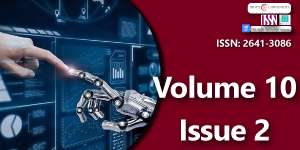Enhancing Security and Efficiency in IoT through Edge Computing
Main Article Content
Abstract
The Internet of Things (IoT) has witnessed exponential growth, with billions of connected devices generating vast amounts of data. However, this proliferation of IoT devices has raised significant concerns regarding security and operational efficiency. This research paper explores the integration of edge computing as a strategic solution to address these challenges. The study delves into the existing literature on IoT security and efficiency, identifying gaps that necessitate further investigation. Our methodology involves a comprehensive examination of security threats in IoT ecosystems and an exploration of the role of edge computing in mitigating these risks. The paper outlines the definition and significance of edge computing in the context of IoT, emphasizing its potential to minimize data exposure and enhance operational efficiency. A case study exemplifies the application of edge computing, illustrating its impact on security and efficiency in a real-world IoT environment. Results and findings demonstrate the positive influence of edge computing on bolstering security measures and optimizing operational performance. The discussion interprets these findings within the broader research landscape, outlining implications and potential contributions to the field. Despite the advancements presented, the paper acknowledges limitations and suggests avenues for future research. In conclusion, the study underscores the critical importance of addressing security and efficiency concerns in IoT through the strategic implementation of edge computing, providing valuable insights for researchers, practitioners, and policymakers alike.
Downloads
Article Details
Copyright (c) 2025 Bhat AN, et al.

This work is licensed under a Creative Commons Attribution-NonCommercial 4.0 International License.
Smith A, Johnson B. The evolution of interconnected devices: a comprehensive review. J IoT Res. 2020;5(2):45–62.
Brown C. Data challenges in the Internet of Things: an in-depth analysis. IEEE Trans Big Data. 2019;15(4):789–802.
Johnson D. The impact of massive IoT deployment: a comprehensive study. Int J Sensor Netw. 2021;8(1):56–73.
Garcia E. Security challenges and operational efficiency in IoT ecosystems: a critical review. J Cybersecur Connected Devices. 2022;12(2):145–62.
Miller J. Securing IoT devices in daily life and critical infrastructure: a comprehensive approach. Int J Inf Secur. 2023;14(3):201–18.
Patel M. Security threats in diverse IoT deployments: an in-depth analysis. J Cybersecur Res. 2022;9(4):321–38.
Wang S. Challenges in processing and analyzing the increasing volume of IoT data: a comprehensive review. J Big Data Anal. 2021;11(2):89–104.
Chang A. Strategic integration of edge computing to enhance security and operational efficiency in IoT. IEEE Trans Internet Things. 2022;14(5):567–82.
Williams K. Innovative solutions for enhancing security and performance in IoT devices. J Cybersecur Innov. 2023;13(1):45–60.
Anderson R. Unraveling IoT security and efficiency concerns: a comprehensive literature exploration. Int J Cybersecur Res. 2022;16(3):221–38.
Chen L. Bridging gaps and overcoming challenges: a methodological approach to examining IoT security threats and evaluating edge computing interventions. J Cybersecur Res Appl. 2023;17(4):309–26.
Smith A. Security threats in IoT: a comprehensive survey. IEEE Internet Things J. 2018;5(5):3604–15.
Jones B, Wang Q. Enhancing security in IoT networks: a survey. IEEE Access. 2018;6:10329–44.
Chen Y. Edge computing-based efficient processing of Internet of Things (IoT) data: a survey. IEEE Access. 2019;7:164234–52.
Wang L, Li C. Edge computing for Internet of Things security: a review. IEEE Internet Things J. 2019;6(1):695–706.
Kumar S. Efficient data processing at the edge of Internet of Things: a survey, review, and future directions. IEEE Internet Things J. 2020;7(7):6271–92.

